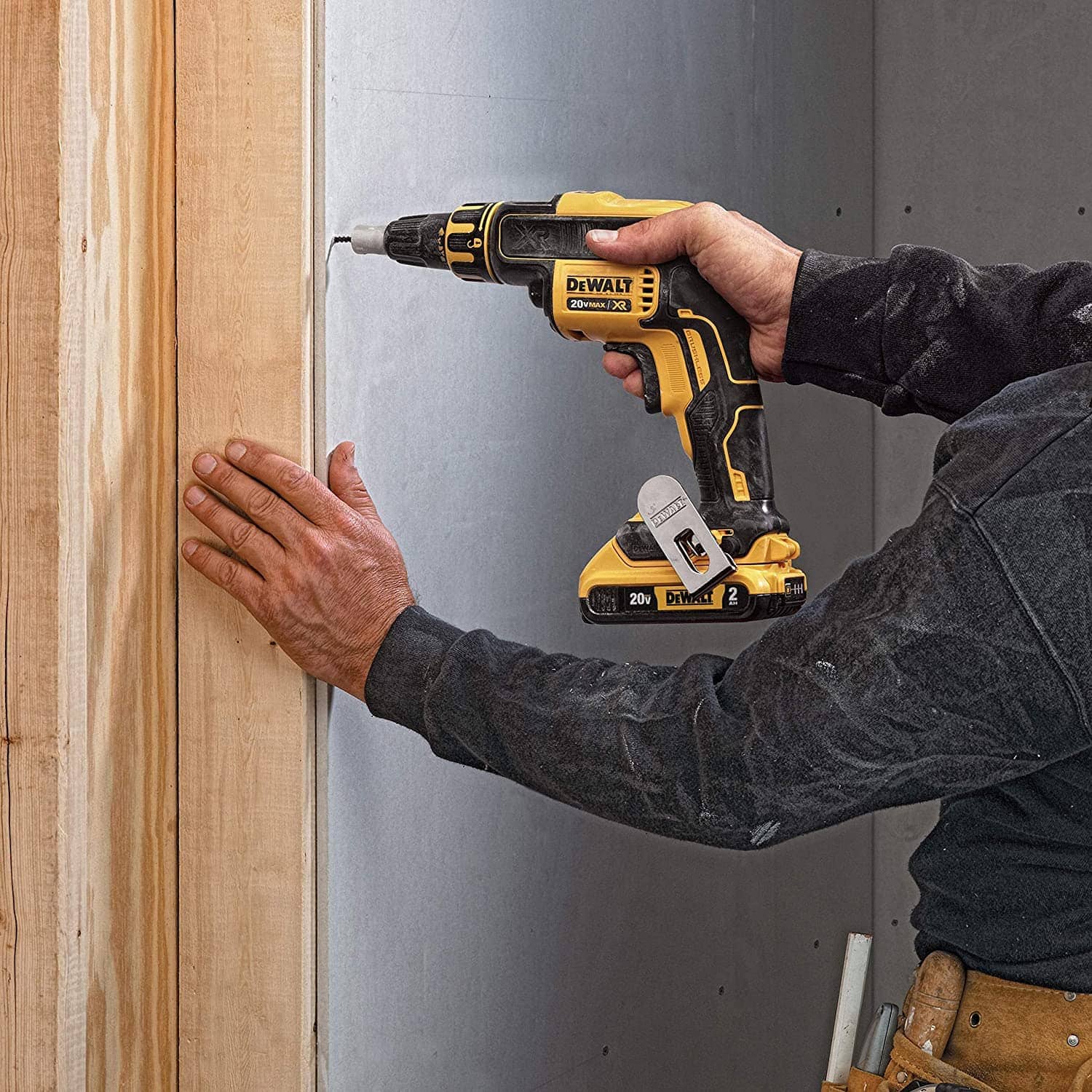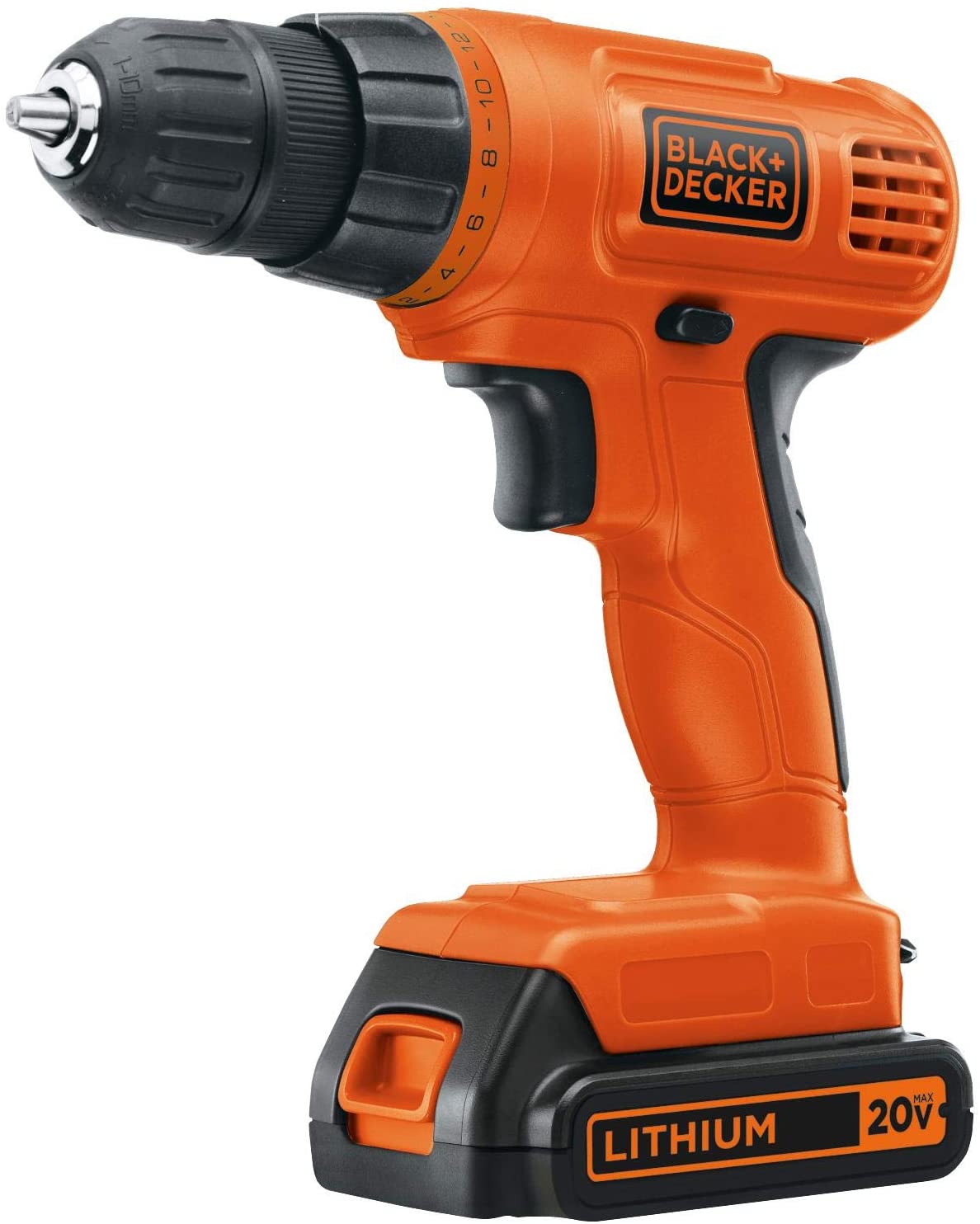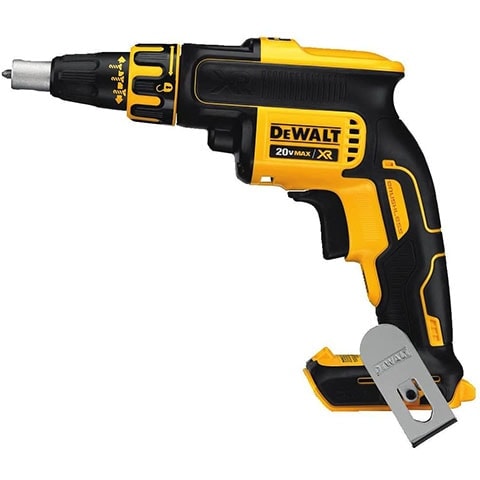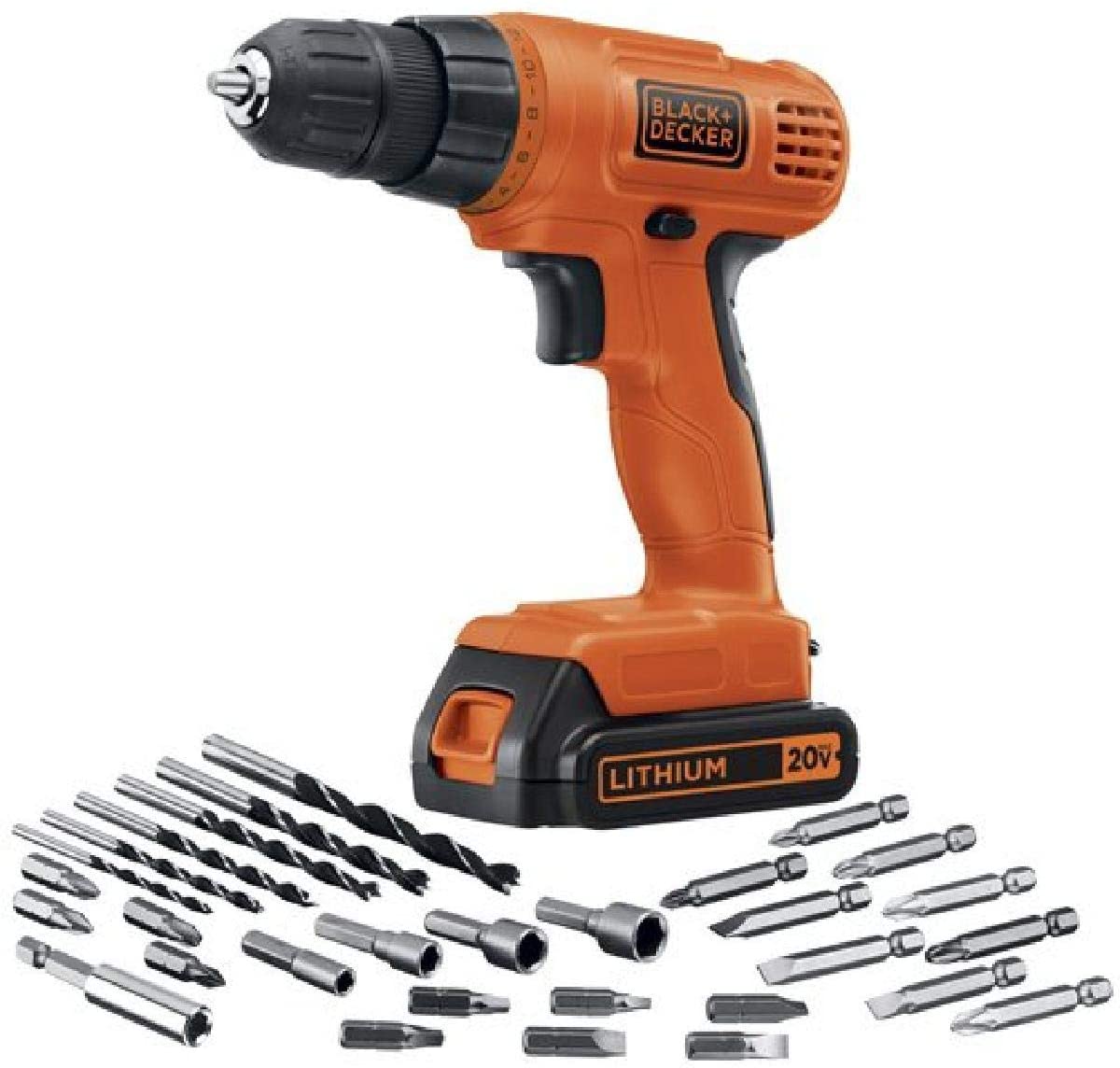Screw Gun vs Drill: What is the Difference?
-
- Last updated:


Screw guns and drills appear to do very similar jobs. As you might imagine, they can often get mixed up for this reason. However, there are some differences between them. A screw gun is suitable for jobs that drills aren’t necessarily great at, and the opposite can be said as well. Choosing the right tool for your projects can be the difference between a straightforward DIY fix and a frustrating, hours-long project.
With that said, it can be challenging to these two apart, and therefore also difficult to choose the best option for your toolbox. We’ll help you decide which option is best for you in this article.
While many people may decide to purchase both tools to cover all of their bases, you still need to know when to use one tool instead of the other. This article will help you figure that out.

Overview of Screw Guns
A screw gun looks a lot like a drill. However, it has a “nose” instead of a chuck. The nose holds particular bits that are used for drilling. These are often referred to as “tips.” The most common tip is the 1-inch option. However, other tips are available as well. The one you need depends mainly on your particular requirements and what projects you’re doing. They’re generally pretty inexpensive, so most users have more than one tip.
A screw gun is very similar to a nail gun in that it feeds screws from a clip. You don’t have to line up every screw as you do with a drill. This allows you to work much faster, putting screw guns above drills when it comes to driving screws.
Of course, that is all a screw gun can do. They are far less versatile than other options simply because they can only drive screws. Most power tools have a few different uses, but that isn’t the truth with a screw gun. They aren’t inexpensive either, so you need to drive many screws to justify the cost of this power tool.

Types of Screw Guns
There are two main types of screw guns: corded and cordless. As the name suggests, corded screw guns have a cord that plugs into a wall. They require electricity to work, so they are best used by homeowners who never move too far away from their workshop. They are less portable, but they are also decently lightweight.
Corded screw guns are the “default” option. Most screw guns you find will fit into this category.
Cordless screw guns rely on a battery for their power. They can be used practically anywhere as long as their battery still has some juice left. Because batteries are often quite heavy and expensive, they do weigh down the tool quite a bit. These are much heavier than other options on the market. They also tend to be more expensive because you have to pay for the battery as well. Batteries aren’t cheap!
Because they don’t rely on a cord, cordless options are much more portable than corded options. They are rarer because most people do not need a very portable screw gun. Cordless options are only designed for professionals who may be working away from electricity.
Uses
A screw gun can only be used for driving screws. It cannot drill holes or anything of that sort. It only drives screws. As you might imagine, this limits its uses quite a bit. However, it can be beneficial in some situations. For example, these guns often allow you to control the exact drive depth. This is perfect for situations that involve drywall since drywall requires screws to be placed at a particular depth.
Screw guns are also quite useful for putting together furniture. They are perfect if you like to purchase items from IKEA and similar companies. They are perfect for DIYers who need to drive a lot of screws.
With that said, though, if you aren’t hanging a bunch of drywall or putting furniture together, you probably do not need a screw gun. You aren’t going to get much out of it.
- Very good at driving screws
- Can set the exact drive depth
- Self-feeding belts
- Allow you to work very quickly
- Not particularly versatile

Overview of a Drill
A drill is primarily used for making round holes or driving screws. They are far more versatile than most other options simply because they can perform both jobs pretty well. They are fitted with a bit, which is secured by a chuck at the tool’s front. Some of them have a “hammer” function, making them more powerful and even more versatile.
Drills vary a lot. Some are designed for specific purposes, while others are more multipurpose. They are often corded, but cordless options exist as well. Drills are used in woodworking, metalworking, construction, and a variety of other situations.

Types of Drills
There are a few ways you can break up the different types of drills available. Firstly, you have corded and cordless drills.
Corded drills are the most popular options. They are generally some of the most powerful because they are plugged directly into the wall. They have a very high weight to power ratio. In other words, they are relatively low weight while also being very powerful. They are often much cheaper as well since you don’t have to purchase a battery.
Cordless drills are much newer. However, they are increasingly becoming more popular. As you might imagine, these drills are much more portable because the cord doesn’t restrain them. They do require the use of a battery, which makes them quite a bit heavier than their corded cousins. The runtime of the battery also limits you.
Hammer drills also exist. These are in their own category. They look very similar to the usual drill. However, they have a drilling action that allows them to drill masonry. They are very niche tools, which means that they are also not as favored by any means. They are only suitable for situations that involve masonry. If you don’t work with masonry very often, then you probably don’t need one.
Rotary hammers exist as well. These combine a hammer mechanism with a separate rotation mechanism. They are also used for dealing with substantial materials, like concrete.
Uses
Drills are very versatile. You can use them to drive screws and drill holes. Many bits are available, so you can drill holes of many different sizes and drive all sorts of screws. You can make tiny holes and massive holes in a variety of different materials. Some can even be used with metal, though most are designed to be used with wood.
On top of screws, you can also drive bolts and speed up the assembly of furniture substantially. Drills can even be used to mix paint and concrete with the right add-ons. They can also remove rust and grind metals with the correct attachment.
To make these tools versatile, you will need to commit money to accessories and attachments. This can cost quite a bit, so it is essential to keep in mind. You will not be able to utilize your drill without spending a bit of money altogether.
- Versatile
- Many types available
- Easy to find
- Can drive just about everything
- Doesn’t allow you to set drive depth
- Add-ons can be costly
What Are the Differences?
There is one significant difference between a screw gun and a drill. Screw guns are only suitable for driving screws. They do this very quickly and satisfactorily. You can even find some that have self-feeding belts, which allow you to work very quickly. They allow you to set the depth for the screw you’re driving, making them very suitable for drywalling.
However, their uses aren’t versatile enough to make purchasing one worth it unless you work with drywall a lot.
At the same time, drills are incredibly versatile. They can drill holes and drive a whole host of things. This makes them far more suitable for homeowners who may find themselves doing a wide variety of different DIY repairs and upgrades.
This is the main difference between the two tools and should be your primary consideration when choosing between them.
Convenience
Both of these tools can be convenient in specific situations. If you’re looking for something to keep around the house, then a drill is the best option for you. It can perform a lot of jobs, and you’ll probably find yourself needing a drill many different times, especially if you do a lot of DIY. If you like to perform your home repairs, then a drill is the best option.
However, after getting a shipment of IKEA furniture, you would be much better off with a screw gun at your side. They work much faster and are less frustrating to use when assembling furniture. For drywalling, screw guns are far better than a drill will ever be.
Some people may decide to have both on hand just in case. If you have the extra money, there is nothing wrong with investing in both. However, for most homeowners, you should stick with a drill. You probably won’t be using a screw gun enough for it to matter much.

Quick Look: Our Top Choices
Our Favorite Screw Gun: DeWalt 20V Max XR Drywall Screw Gun

Our favorite screw gun by far is the DeWalt 20V Max XR Drywall Screw Gun. It is entirely cordless and has a brushless motor for top-notch performance. It has a very long runtime with the correct battery and is very ergonomic. We liked the comfortable handle and balanced design, which helped prevent fatigue.
The LED light was very bright and easily lit up most dark areas. It is costly, however, and a battery is not included.
Our Favorite Drill: BLACK+DECKER 20V MAX Cordless Drill

The BLACK+DECKER 20V MAX Cordless Drill comes with a vast number of accessories. You can do practically anything with this drill, thanks to the massive number of accessories it comes with. It is also relatively inexpensive and should fit into the budget of most users.
The kit also comes with a 20V lithium-ion battery, so you won’t have to spend extra money purchasing it separately.

Conclusion
Drills are more versatile than screw guns. However, screw guns are the go-to option if you’re putting up drywall. Both are great for any homeowner who likes to do their DIY. The option you choose rests on what you need to do.
For putting together furniture and drywall, get a screw gun. For everything else, a drill is going to be your best option.
Contents

